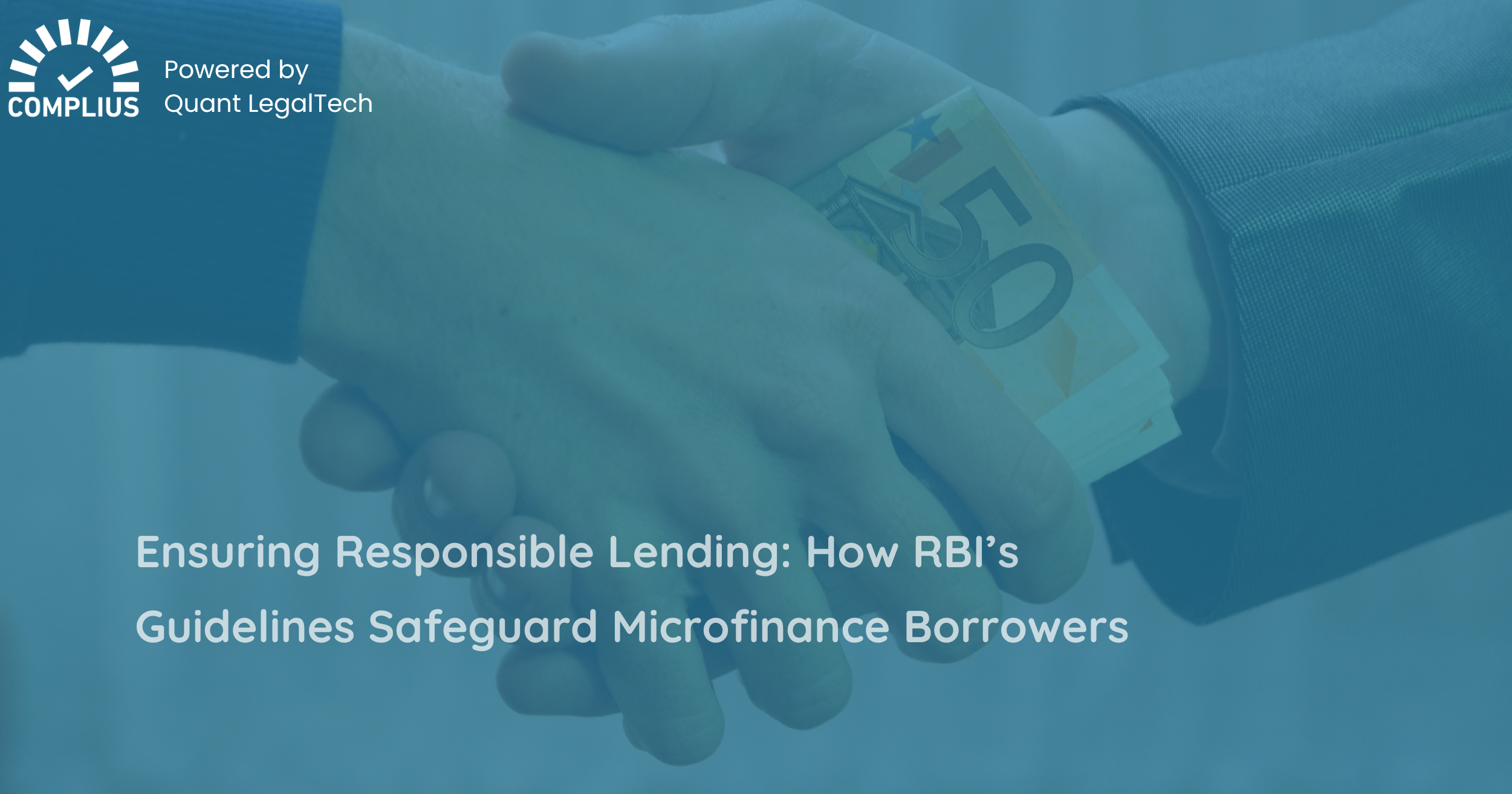Choose another country or region to see content specific to your location
Ensuring Responsible Lending: How RBI’s Guidelines Safeguard Microfinance Borrowers
December 24, 2024

“Microfinance stands as one of the most promising and cost-effective tools in the fight against global poverty.” ― Jonathan Morduch
What is a Microfinance Institution or an MFI?
Microfinance institution is an entity that provides a range of basic financial services that are tailored especially to the needs of low-income individuals and families who often struggle to obtain banking services. For example, an MFI can provide its clients’ access to basic savings accounts that have no minimum balance requirements or that have no recurring monthly fees. They offer basic credit services to help clients start small businesses or improve their homes and this credit is accessible without collateral or formal wage requirements. By bridging this financial gap, MFIs can help poor families get a rung on the economic ladder and work their way up and permanently out of poverty.
How is it impacting the lives of the economically disadvantaged?
As on 31 March 2023, 16.19 crore rural households were covered under the SHG-BLP. A total of 134.03 lakh SHGs were linked to the banking sector with savings of Rs. 58,892.67 crore, registering growth of 13% and 25% over the PY. As of September 2023, self-help group (SHG) lending reached INR 5.8 lakh crore. Workforce participation among women also rose significantly, from 23.3% in FY 2018 to 37% in FY 2023.
Let’s understand the legal framework governing MFIs in India:
With the continuous growth of MFIs in the Indian economy, it has become important that there are strict guidelines to govern the MFIs to prevent any kind of exploitation of the rural population from the hands of these lending institutions. MFIs that are registered as NBFCs with the RBI are subject to several directions that specify compliance that the MFIs have to adhere to for smooth and transparent functioning, some of which include:
1. Master Direction –
Reserve Bank of India (Regulatory Framework for microfinance Loans) Directions, 2022 lays down following direction for governing the Microfinance institutions:
– Loans backed by hypothecation of any security shall not be treated as microfinance loans.
– There is a dedicated mechanism for redressal of recovery related grievances to ensure there is no delayed action.
– There is no pre-payment penalty on microfinance loans and penalties are only levied on the overdue amount, not the whole amount.
– RBI has made it mandatory for lenders to display the Min., Max. and average interest rates charged on microfinance loans in all their offices, in the literature (information booklets/ pamphlets) issued by them and details on their website.
– A fair practices code (FPC) based on these directions shall be put in place by all the Regulated Entities (REs) with the approval of their boards.
2. The Non-Banking Financial Company -Micro Finance Institutions (Reserve Bank) Directions, 2011 lays down following directions:
– Every NBFC-MFI should provide to the borrower a loan card which will contain details pertaining to the interest charged, T & C and acknowledgement of repayments by NBFC-MFIs.
– NBFC-MFIs are permitted to extend loans to individual borrowers, whether or not they are members of a Joint Liability Group (JLG) or a Self-Help Group (SHG). By offering loans to both group members and individual borrowers, NBFC-MFIs must remain vigilant to mitigate risks like multiple lending, over-borrowing, and ghost borrowers—all of which can undermine borrower repayment capacity and financial stability.
– Adherence to all aspects of the Fair Practices Code is mandatory and borrowers must receive a loan agreement with all T & Cs, including repayment schedules and charges and there shall be only three components in the pricing of the loan viz. the interest charge, the processing charge and the insurance premium.
– Borrowers should have the option of weekly, fortnightly, or monthly repayments as per their convenience and they cannot force a particular schedule on borrowers.
– Recovery efforts should primarily occur at a central designated place, and visits to the borrower’s residence or workplace are permitted only after two consecutive failures to appear.
Contribution of Microfinance in India’s Growth:
Traditional banking often overlooks low-income individuals due to complex procedures and collateral requirements. People are able to increase their existing prospects with the help of microfinance as it caters to their needs as follows:
1. Microfinance solutions enable consumers to obtain loans when they most need it and increase credit availability. Banks rarely give customers small loans; MFIs that offer microloans fill this gap.
2. By raising the amount of funds accessible to the poor, it enables capital growth. As a result, in addition to providing for these families’ basic needs, MFIs also give them credit so they can upgrade their homes, upgrade the community healthcare system, and pursue new business opportunities.
3. The majority of microloans provided by MFIs go to women, which benefits the socially underprivileged. People without jobs and those with disabilities also benefit from microfinance. These financial solutions assist people by creating opportunities and improving their lives.
Conclusion:
Microfinance can uplift people’s living circumstances and enable small business opportunities that would otherwise be beyond the reach of low-income communities. This can be particularly impactful in India’s underdeveloped regions where whole communities can benefit.
The MFI infrastructure continues to grow in India and several banks have started lending money to microfinance institutions.